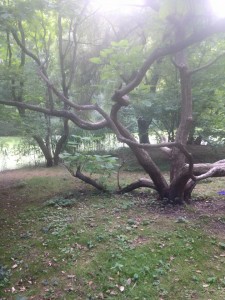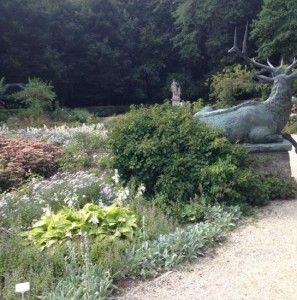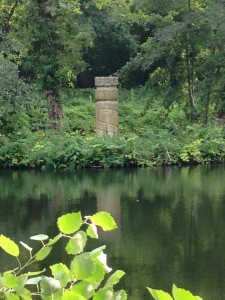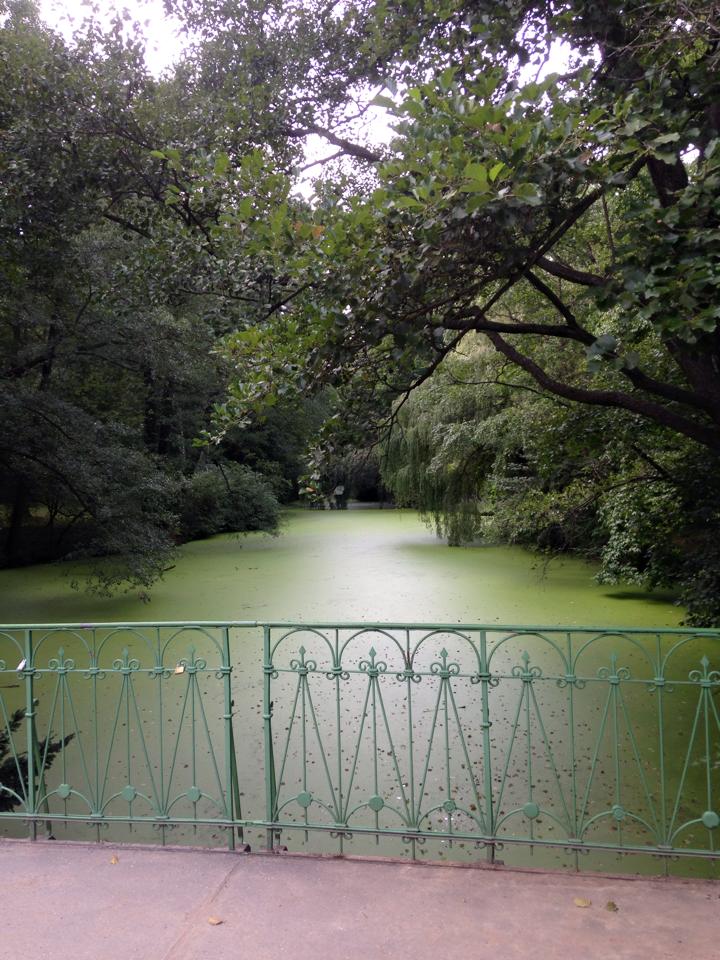
“What is ‘solved’? Do not all the questions of our lives, as we live, remain behind us like foliage obstructing our view? To uproot this foliate, even to thin it out, does not occur to us. We stride on, leave it behind, and from a distance it is indeed open to view, but indistinct, shadowy, and all the more enigmatically entangled”
I arrived at the Tiergarten by bicycle, after having journeyed through Potsdamer Platz and its strange, steely, empty newness. The foliage was a huge relief. There is much of it: the Tiergarten (or Großer Tiergarten) was formerly a royal hunting ground during the 16th century onwards, until the stretch of forest was opened to the public and elaborated as a “Lustgarten” (pleasure garden) or public park by Frederick II in the middle of the 18th century. I was struck by how the landscape (especially or perhaps in spite of the restorations undertaken after WWII) almost unassumingly feels almost conceptually antiquated in contrast to the urban landscape of the city.

I found myself all too easily imagining a childhood in which one wanders here simply to escape the oppressively familiar landscape of buildings and traffic … Play by the ponds, travel by foot paths, invent fantasies perhaps born of the neoclassical ilk of the statues and gardens, mythologize groves. Yet Benjamin’s recollection does not offer the reader such idyllic or superficially relatable scenes. Instead, Benjamin writes under a fragment titled after the park in Berlin Childhood around 1900, “And so this park, which, unlike every other, seemed open to children, was for me, as a rule, distorted by difficulties and impracticalities. How rarely I distinguished the fish in its pond. How much was promised by the name ‘Court Hunter’s Lane,’ and how little it held. How often I searched in vain among the bushes, which somewhere hid a kiosk built in the style of my toy blocks, with turrets colored red, white, and blue. How hopelessly, each spring, I lost my heart to Prince Louis Ferdinand [referring to a statue], at whose feet the earliest crocuses and daffodils bloomed. A watercourse, which separated me from them, made them as untouchable as though they were covered by a bell jar. Thus, coldly, the princely had to rest upon the beautiful; and I understood why Luise von Landau, who belonged to my circle of schoolfriends until she died, had to dwell on the Lützowufer, opposite the little wilderness which nourished its flowers with the waters of the canal” (55). The structure of the prose itself evokes the mazes to which Benjamin so often alludes in the text, leading the reader through allusions (to a surrealist text in one moment, greek mythology the next), images of the park and other specific geographical locations of the city, the gestures and activities of the writer as a child, and then the contemplative reflections of the adult, whose authorial presence is nonetheless never more decisive nor foreclosing than the child-wanderer. But this perhaps dizzying dialectic of losing, retracing, and enigmatically refracting images, concepts, and experiences is not therefore aimless. As the literary critic Peter Szondi wrote, “Now we can understand Benjamin’s strange wish to be able to lose himself in a city—this art which, as he observes, requires practice and which he did not learn until late. It is, we should add, an art which develops at the end of an age. In the section entitled ‘Articles Lost’ in One-Way Street, he writes: ‘Once we begin to find our way about [a place], the earliest picture [we had of it] can never be restored.’ Since this picture harbors the future, it must not be allowed to disappear. It is for its sake that the ability to get lost is something to be wished for” (26).

